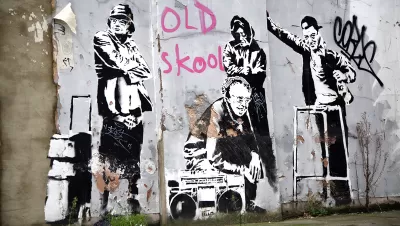A feature article in Marketwatch describes a future for retirement communities that look more like WeWork than the golf course-adjacent exurban communities of the 20th century.

Rachel Koning Beals writes a feature-length article on the evolving priorities of aging seniors exploring the housing market for new kinds of retirement community options.
The current generation of aging Baby Boomers is set to completely redefine the market for retirement communities. Not all of the potential for change for happy reasons, many are facing "financial burdens associated with living longer than prior generations did," according to Beals—a reality "that challenges a U.S. formula for senior housing that hadn’t changed much in decades."
yet, there are reasons for optimism that a new approach to retirement could see benefits for the aging generation. Beals explains:
Yet if the demanding, savvy-consumer baby boomers taking over where their Depression-era parents left off have their say on where and how they live as they age — and geriatrics experts say they do — the era of grin-and-bear-it acquiescence is no more.
Many of today’s best available senior-housing options are really a nod to the past: higher-density locales, homes suited for multiple generations, and community support and stimulation that keeps retirees active and healthy.
Beals notes that many surveys and real estate trends show a back-to-the-city movement for aging seniors, mimicking the preferences of Millennials and Generation Z, but perhaps for different reasons.
Technology is also enabling freedom to live in urban environments like never before: "Technology, especially leveraging the sharing economy, can help satisfy boomers who want to age in place or are rightfully demanding more from their assisted-living options. (Think of services spanning Uber or Lyft rides to in-home wellness programming.)"
FULL STORY: The sharing economy is coming for your retirement

Planetizen Federal Action Tracker
A weekly monitor of how Trump’s orders and actions are impacting planners and planning in America.

DARTSpace Platform Streamlines Dallas TOD Application Process
The Dallas transit agency hopes a shorter permitting timeline will boost transit-oriented development around rail stations.

Four Reasons Urban Planners Can’t Ignore AI
It’s no longer a question of whether AI will shape planning, but how. That how is up to us.

Bikeshare for the Win: Team Pedals to London Cricket Match, Beats Rivals Stuck in Traffic
While their opponents sat in gridlock, England's national cricket team hopped Lime bikes, riding to a 3-0 victory.

Amtrak’s Borealis Exceeds First Year Ridership Expectations
205,800 passengers have boarded the St. Paul to Chicago line, well above initial MDOT projections.

Study: 4% of Truckers Lack a Valid Commercial License
Over 56% of inspected trucks had other violations.
Urban Design for Planners 1: Software Tools
This six-course series explores essential urban design concepts using open source software and equips planners with the tools they need to participate fully in the urban design process.
Planning for Universal Design
Learn the tools for implementing Universal Design in planning regulations.
City of Mt Shasta
City of Camden Redevelopment Agency
City of Astoria
Transportation Research & Education Center (TREC) at Portland State University
US High Speed Rail Association
City of Camden Redevelopment Agency
Municipality of Princeton (NJ)




























